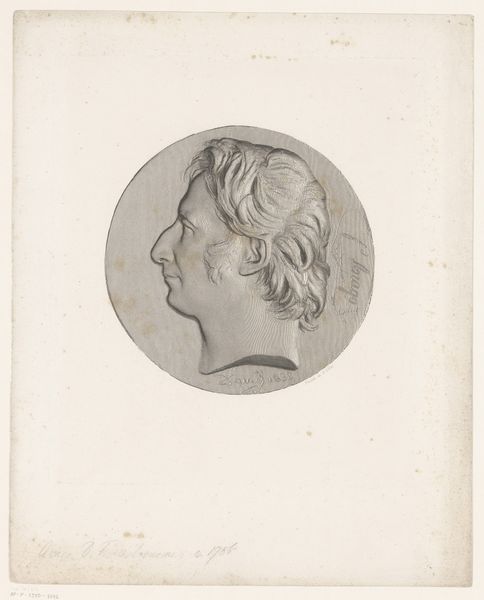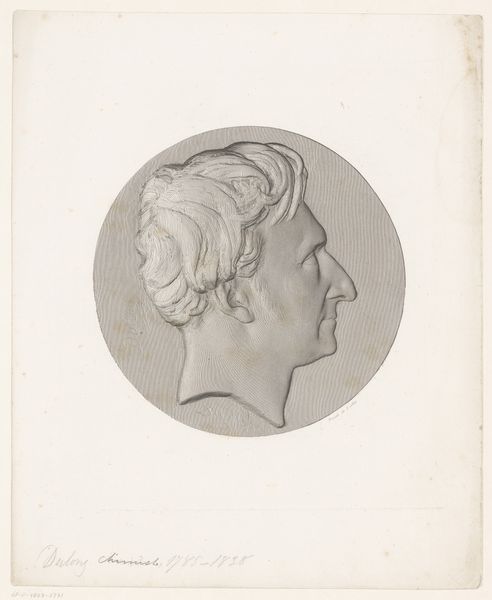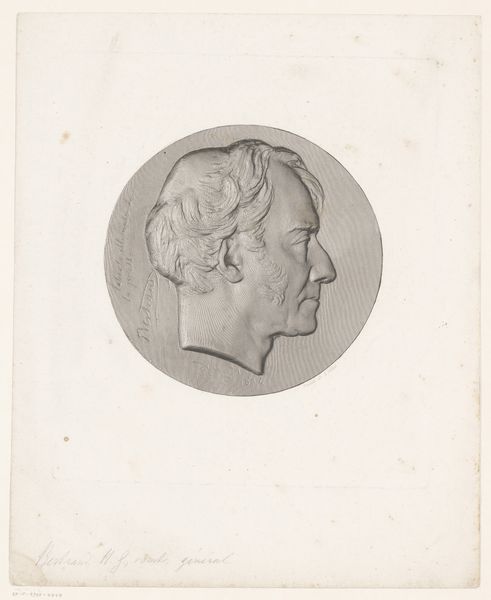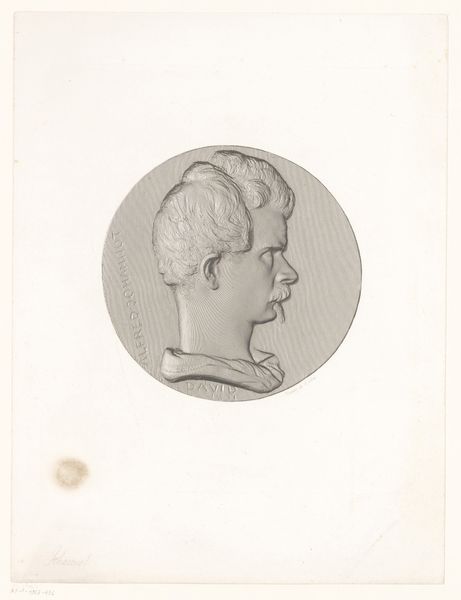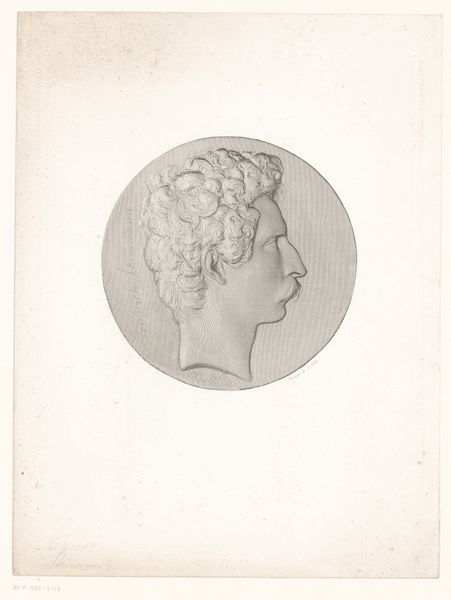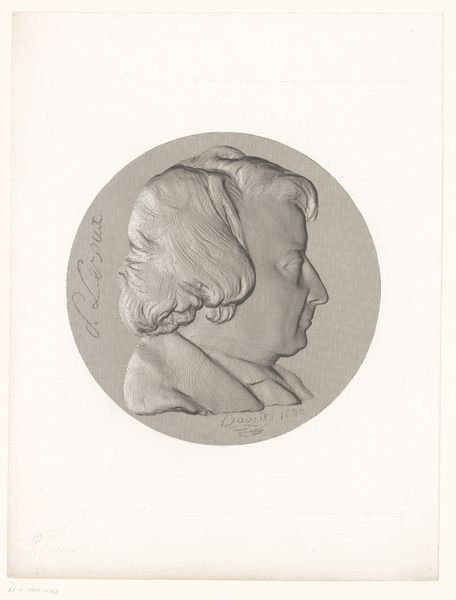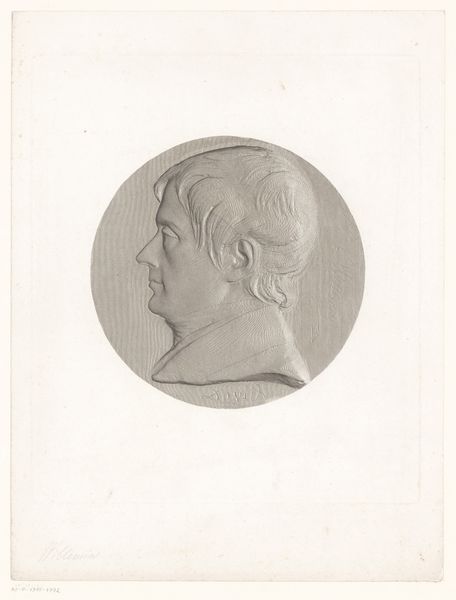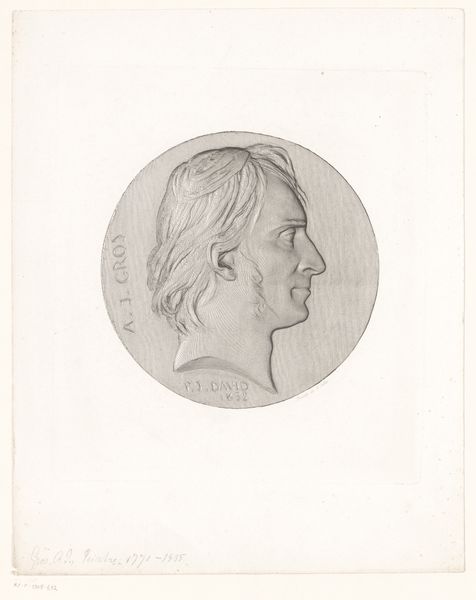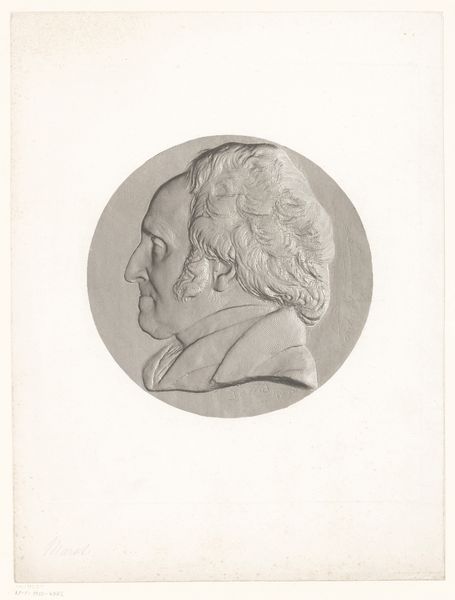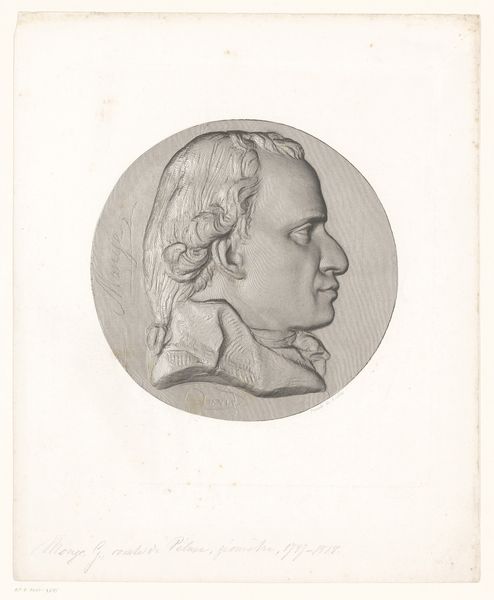
drawing, print, engraving
#
portrait
#
pencil drawn
#
drawing
#
neoclacissism
#
toned paper
#
light pencil work
#
shading to add clarity
# print
#
pencil sketch
#
old engraving style
#
pencil drawing
#
limited contrast and shading
#
portrait drawing
#
pencil work
#
engraving
Dimensions: height 237 mm, width 216 mm
Copyright: Rijks Museum: Open Domain
Editor: Here we have Achille Collas' "Medaille met portret van Louis Jacques Thénard," created after 1837. It’s an engraving, almost looks like a pencil drawing. I find its simple execution really charming, it’s delicate work, isn’t it? How would you approach interpreting a piece like this? Curator: The delicacy you mention points to a very conscious mode of production. This engraving isn't just an image; it's the result of labor, a specific kind of skilled handiwork in a particular social context. The use of engraving as a method - how does that impact your understanding? Editor: Well, knowing it's an engraving makes me think about the reproducibility, it isn't one-of-a-kind, right? Which makes it accessible to more people perhaps, not just elite patrons. Curator: Exactly. Engraving allowed for dissemination of images, knowledge, and even power. It democratized portraiture to a degree. Consider the materials too: the metal plate, the ink, the paper. How are these readily available? How does it shape the artistic possibilities but also speak to an evolving cultural landscape shaped by technology and consumerism? Editor: It makes me think of how we mass produce images now, like on social media. Everything’s so easily shared. Is there a link, maybe, to how engravings like this one worked back then? Curator: There's a clear parallel in the intention of wider distribution, and how that can serve varied functions. But also how these are also commodities circulating within a system. Thinking about it materialistically, forces us to see how seemingly simple portrait functions beyond its aesthetic qualities. What do you think? Editor: It's a fresh way to view this, focusing on production and circulation rather than just the image itself. Curator: Exactly. Hopefully now when you come across pieces such as these, you can see how materials and making art challenge boundaries.
Comments
No comments
Be the first to comment and join the conversation on the ultimate creative platform.
